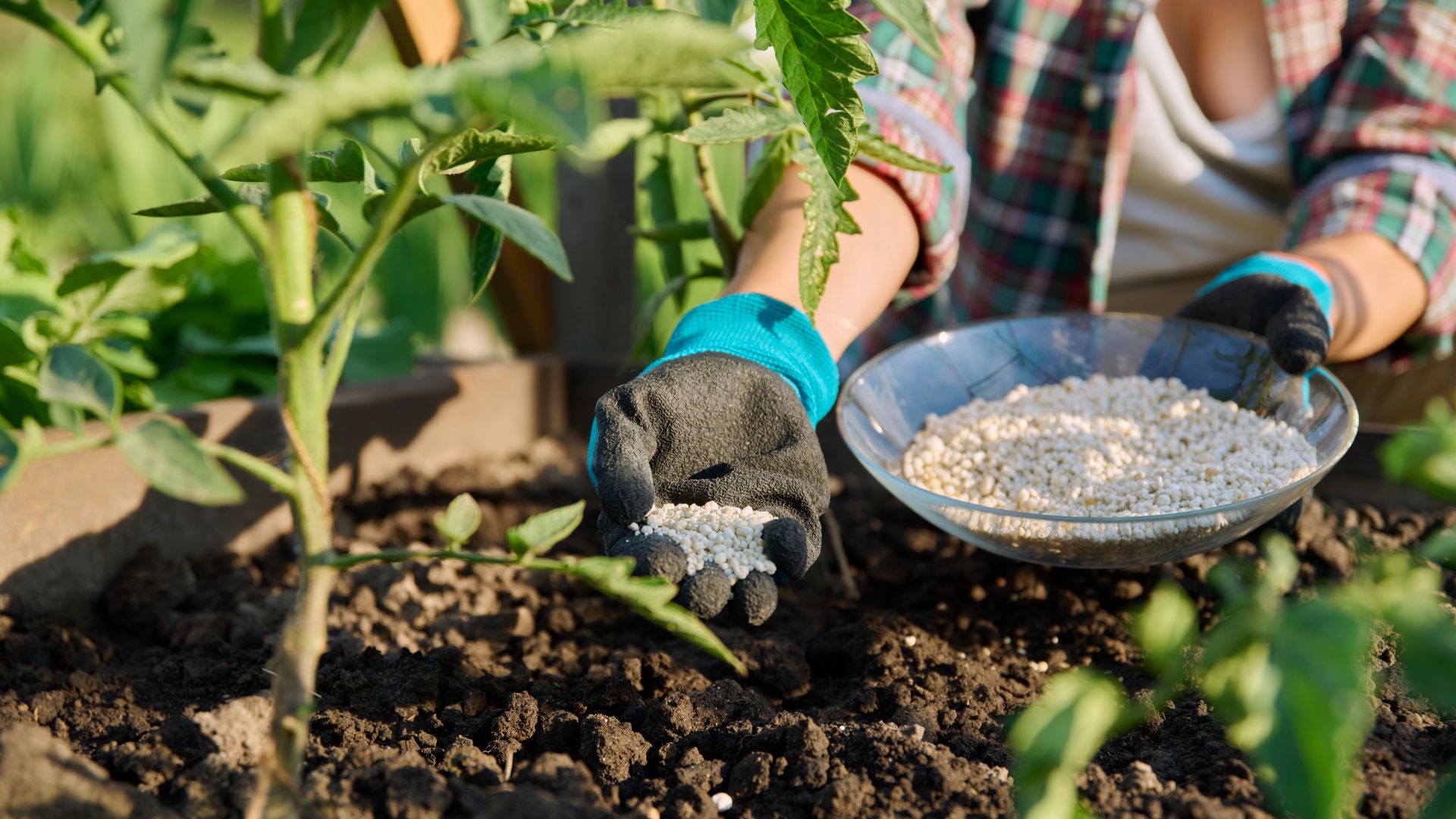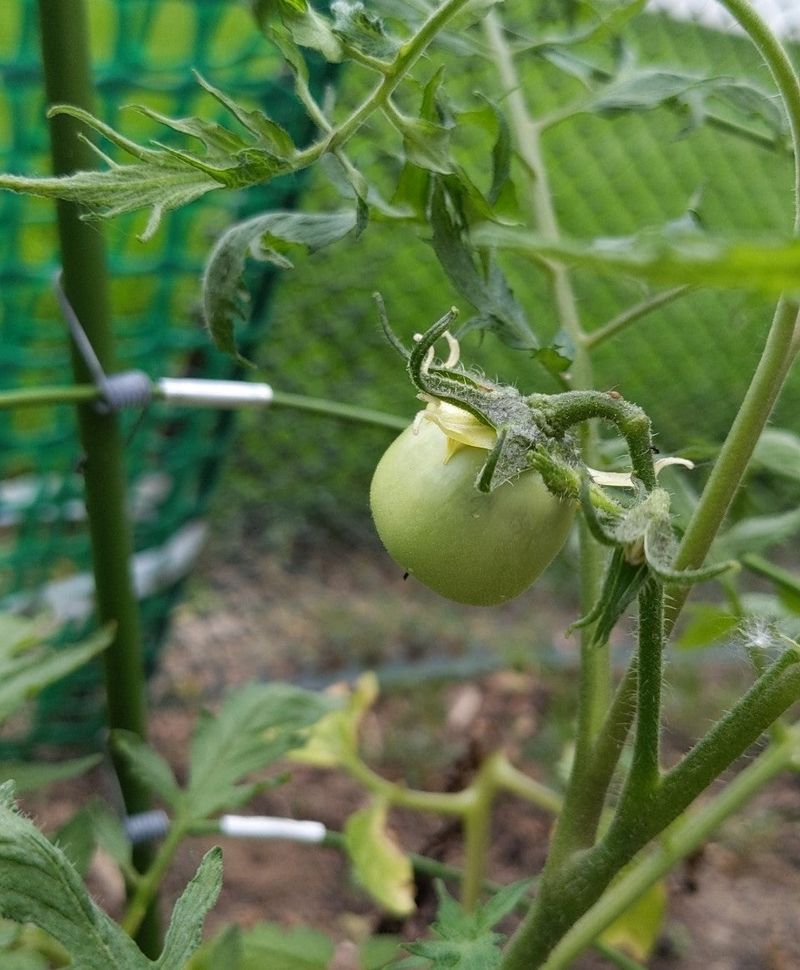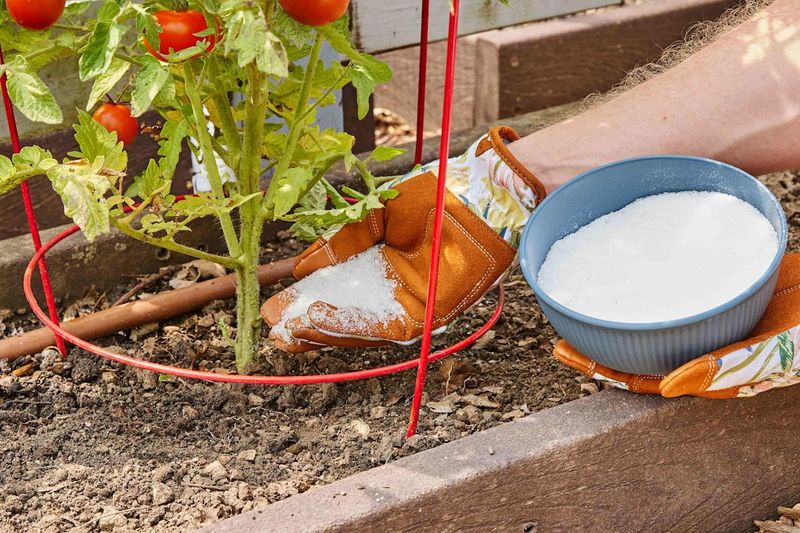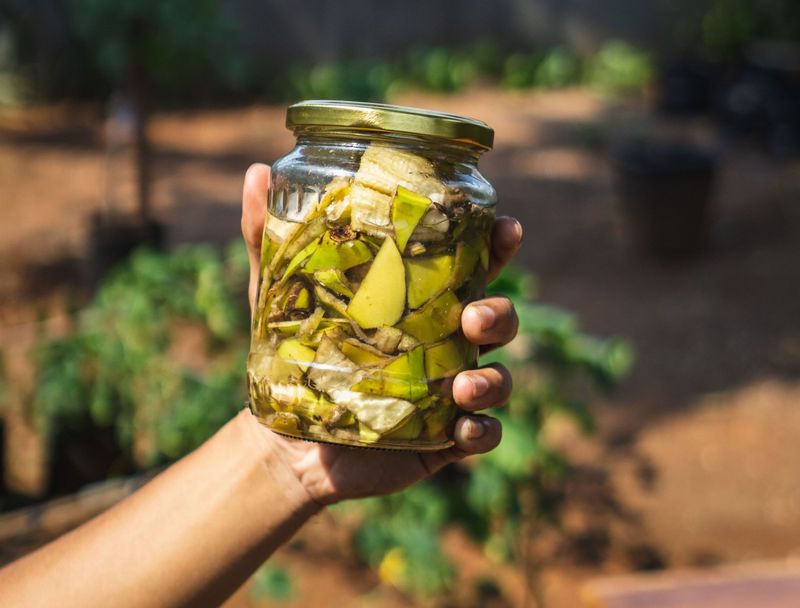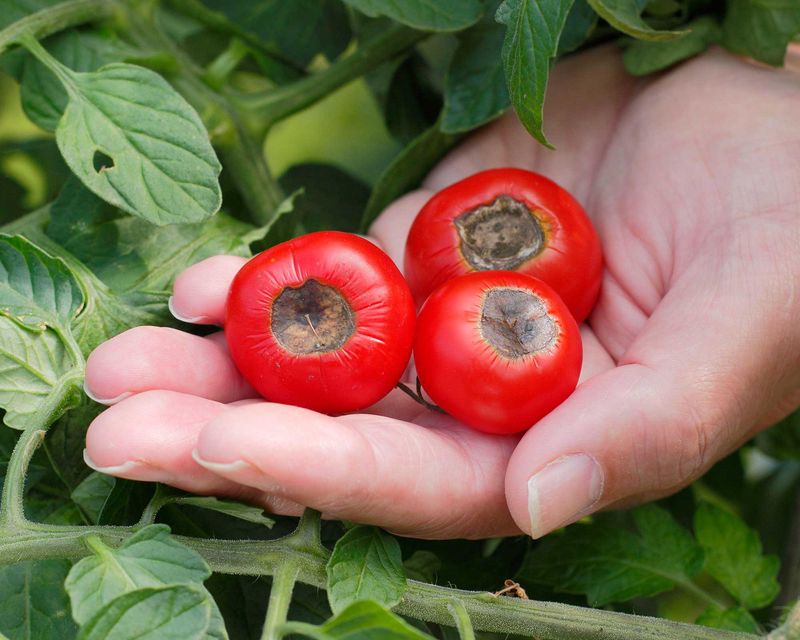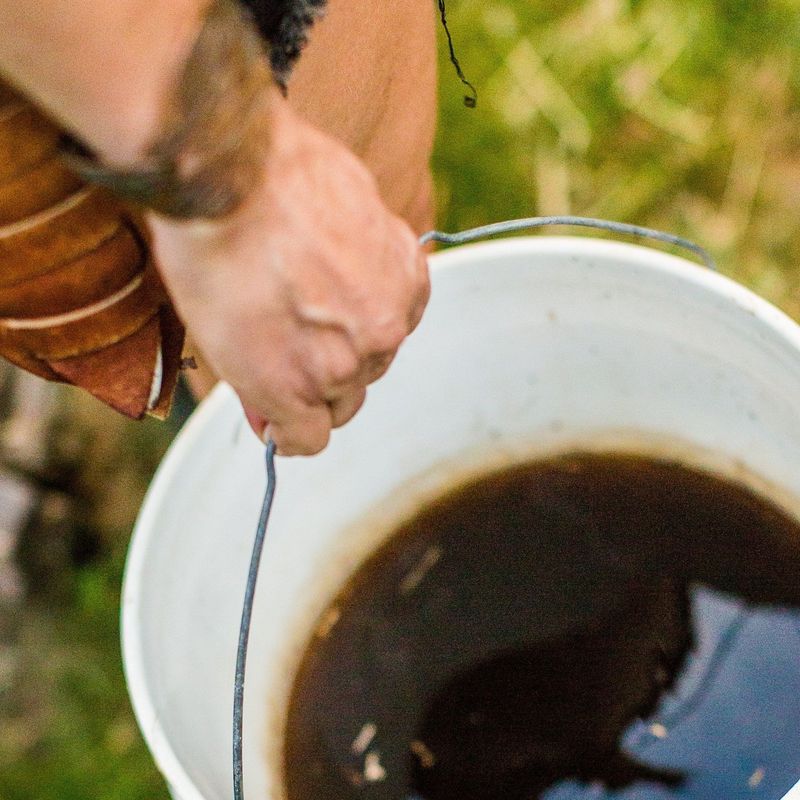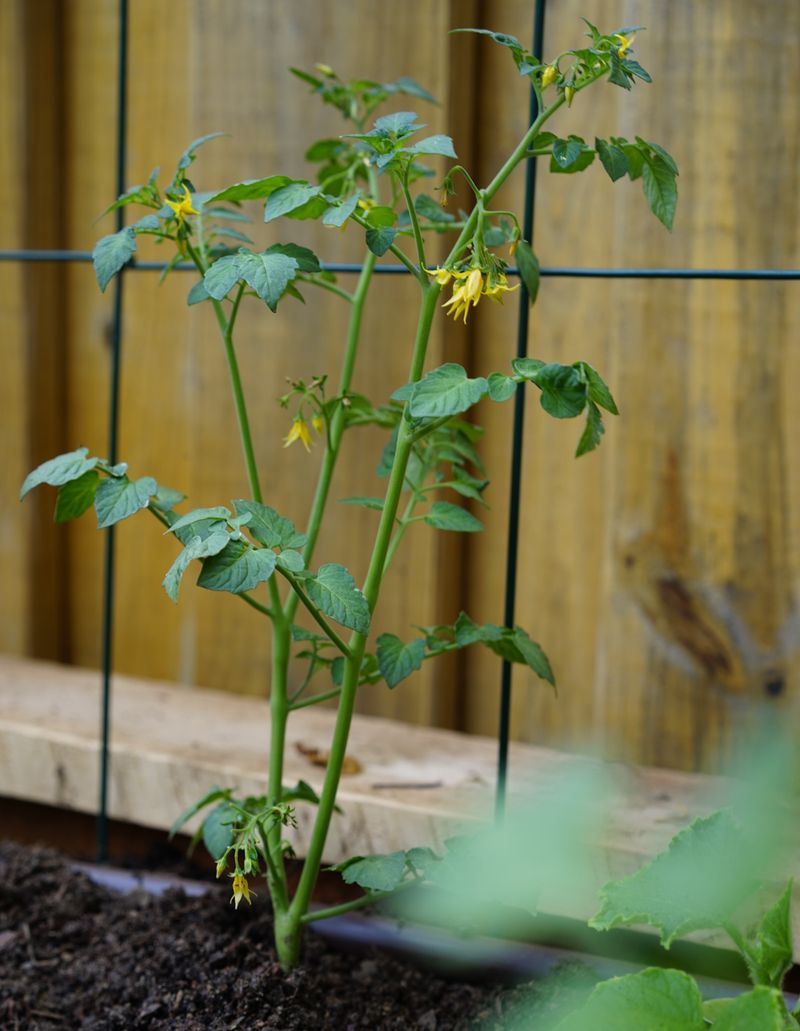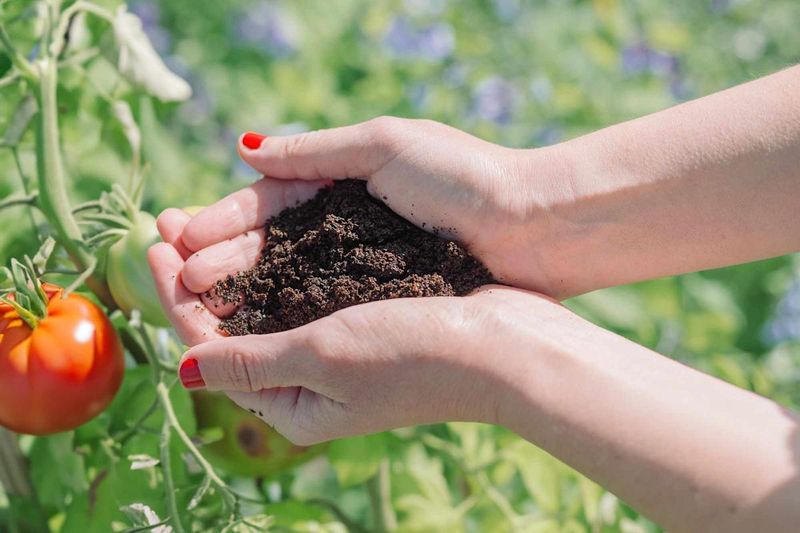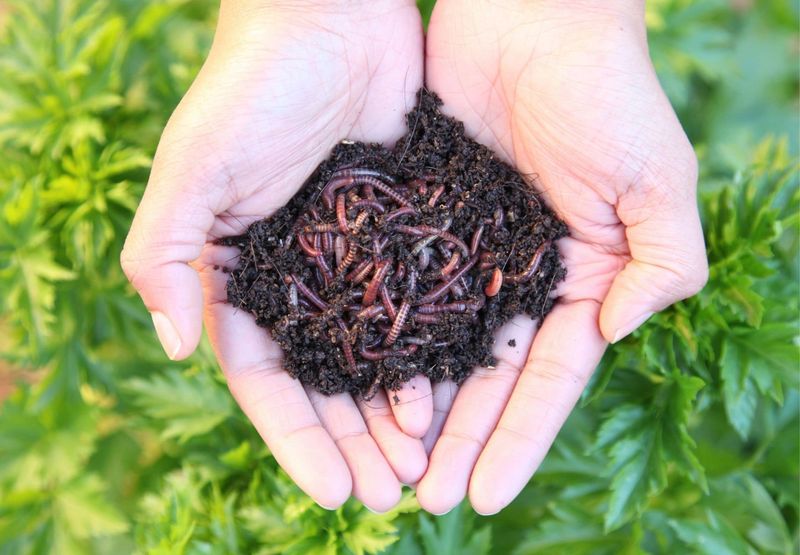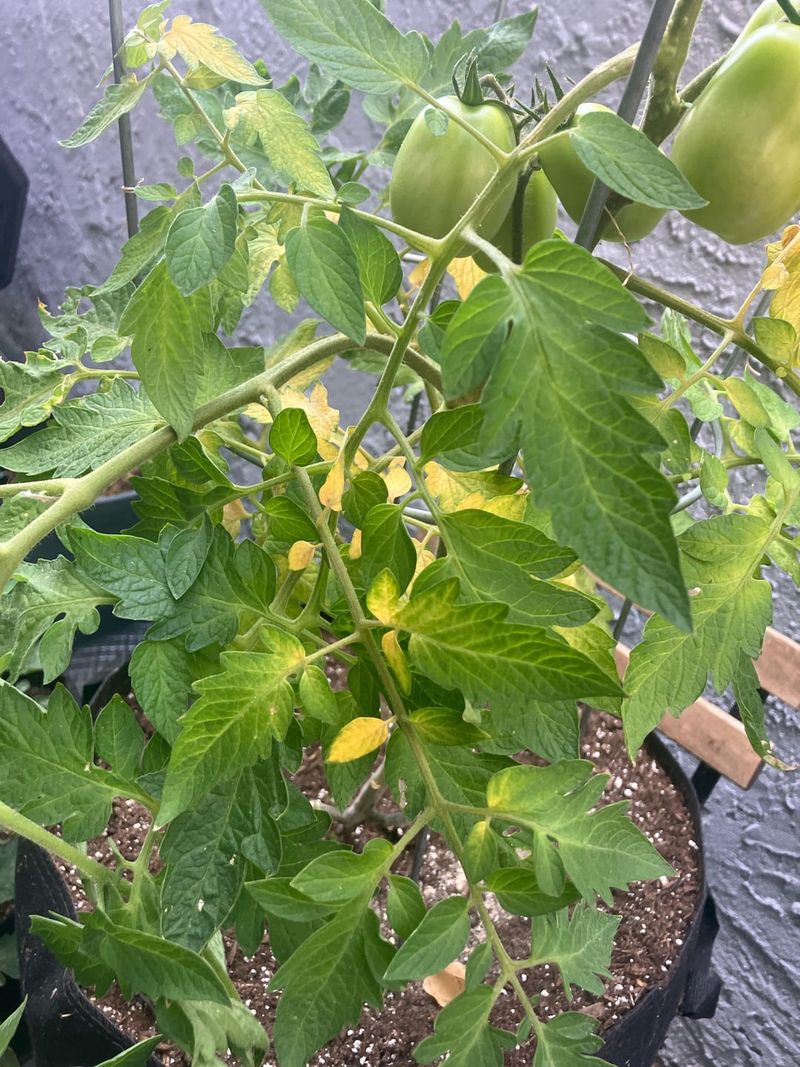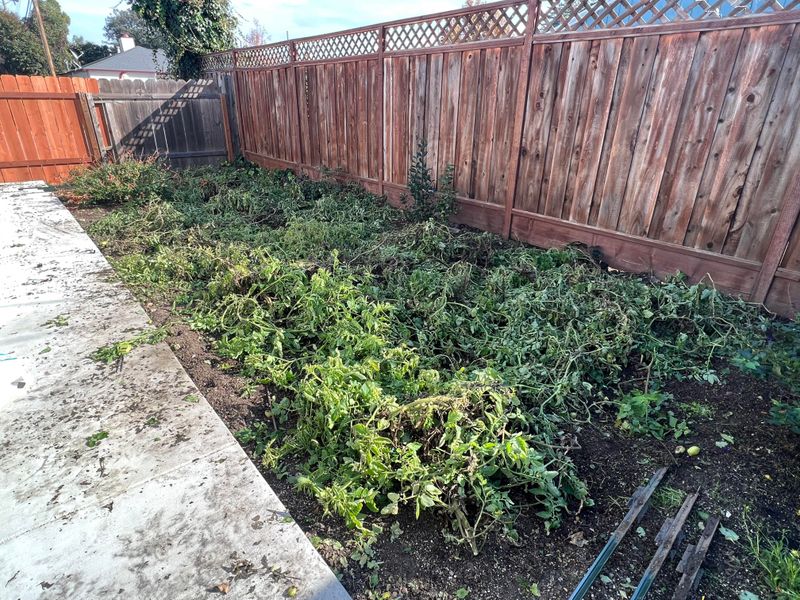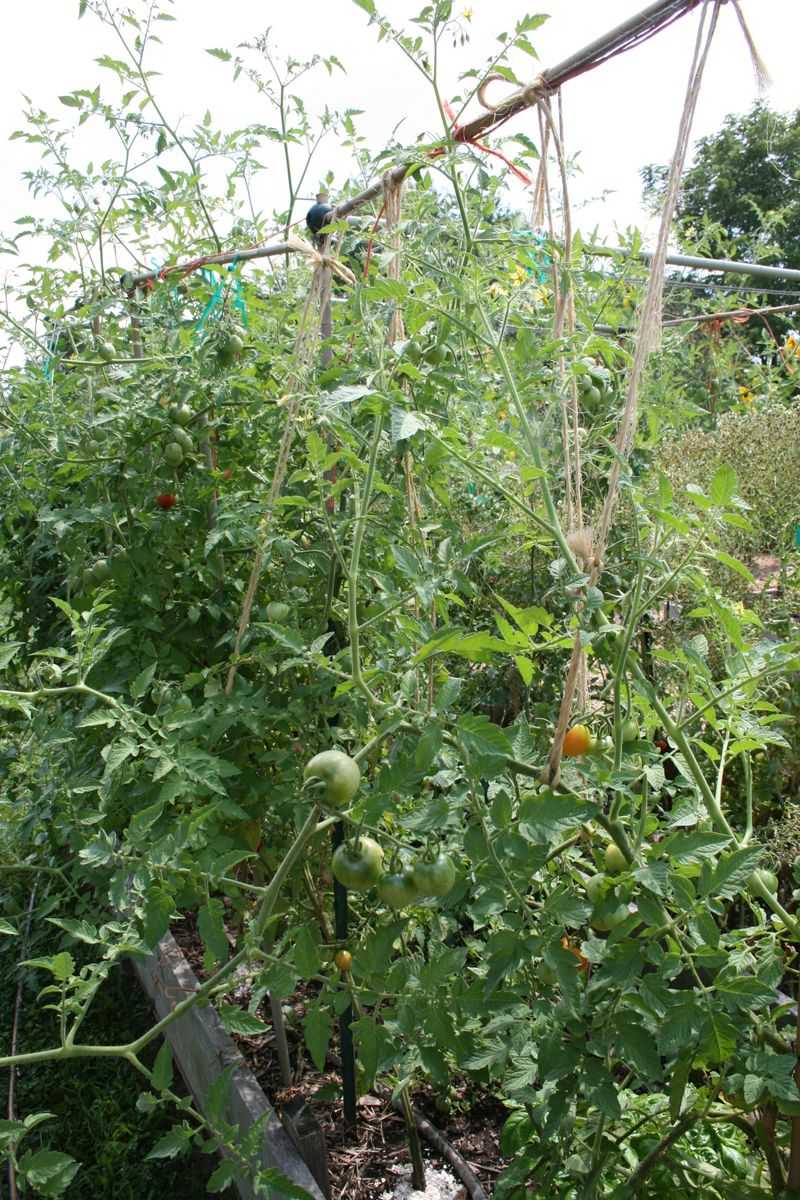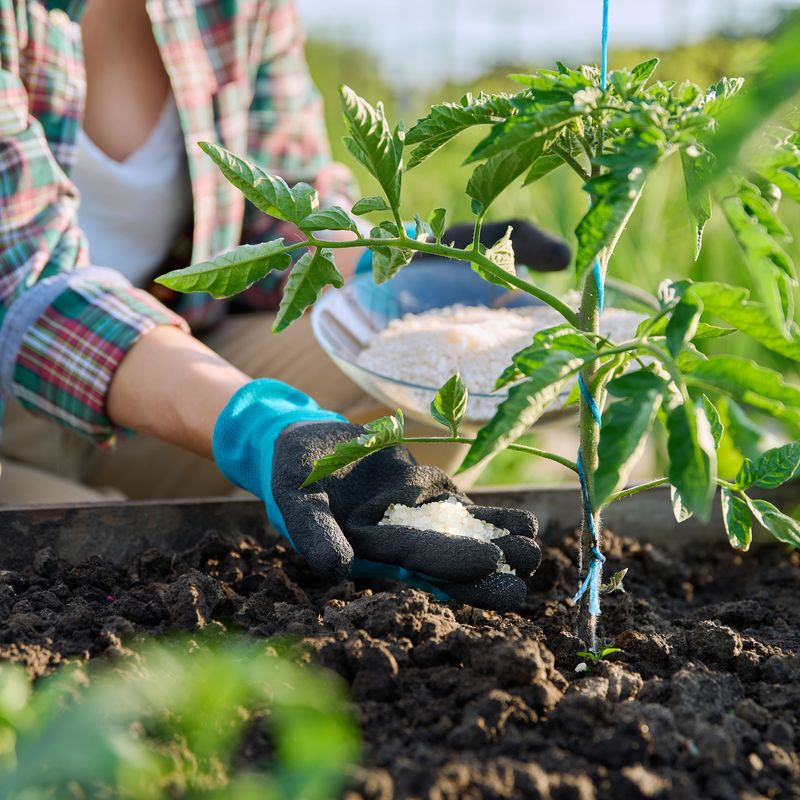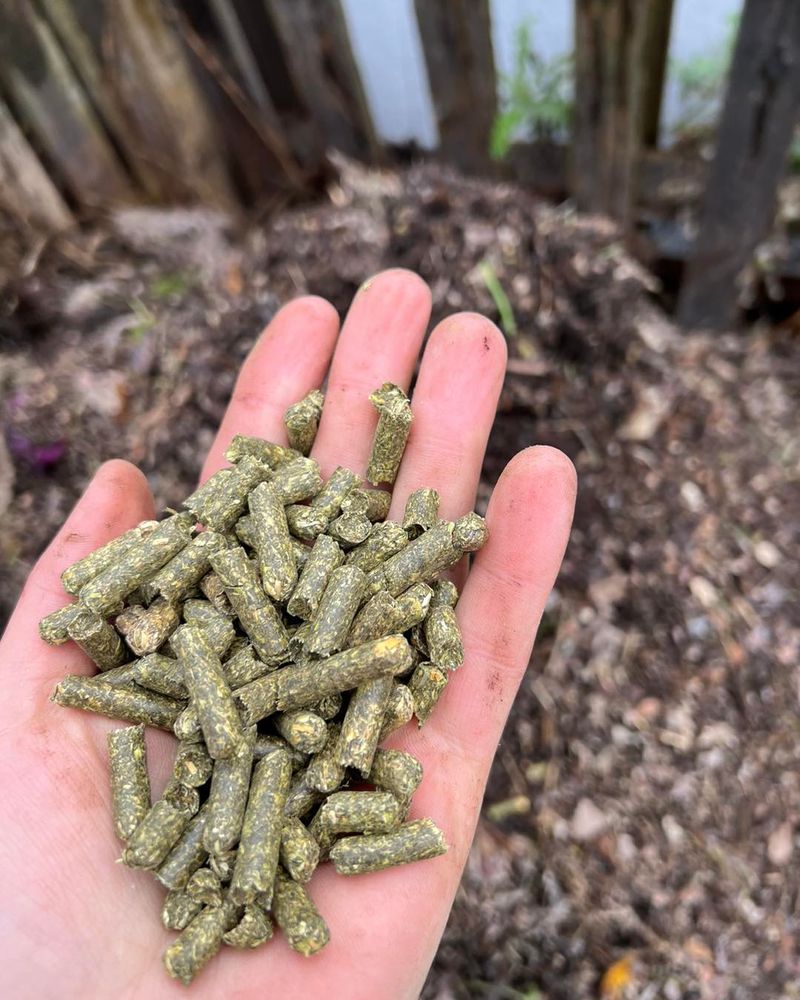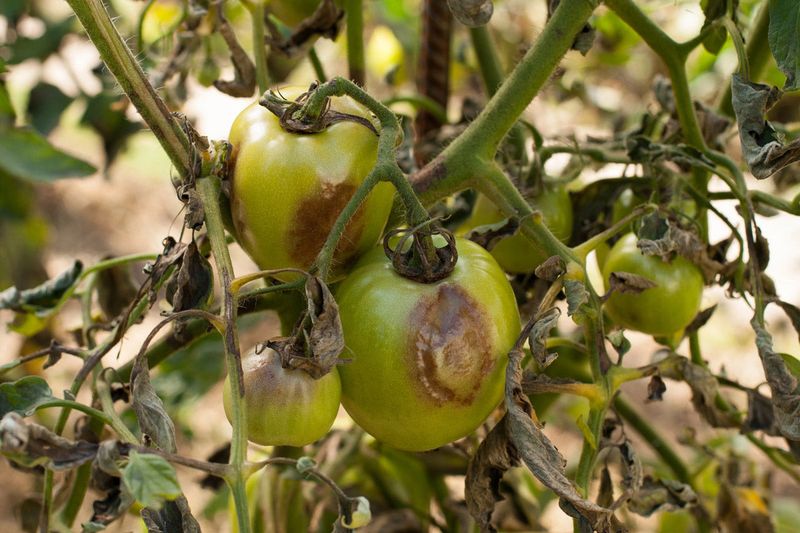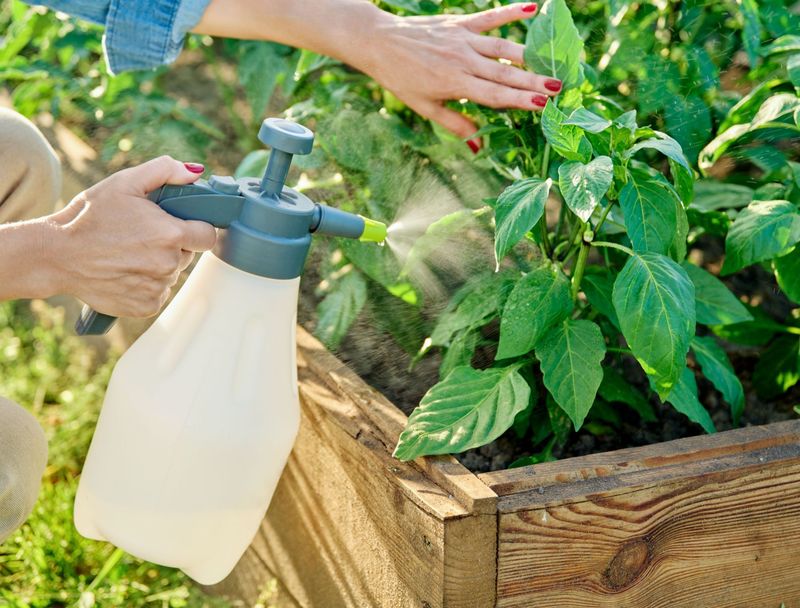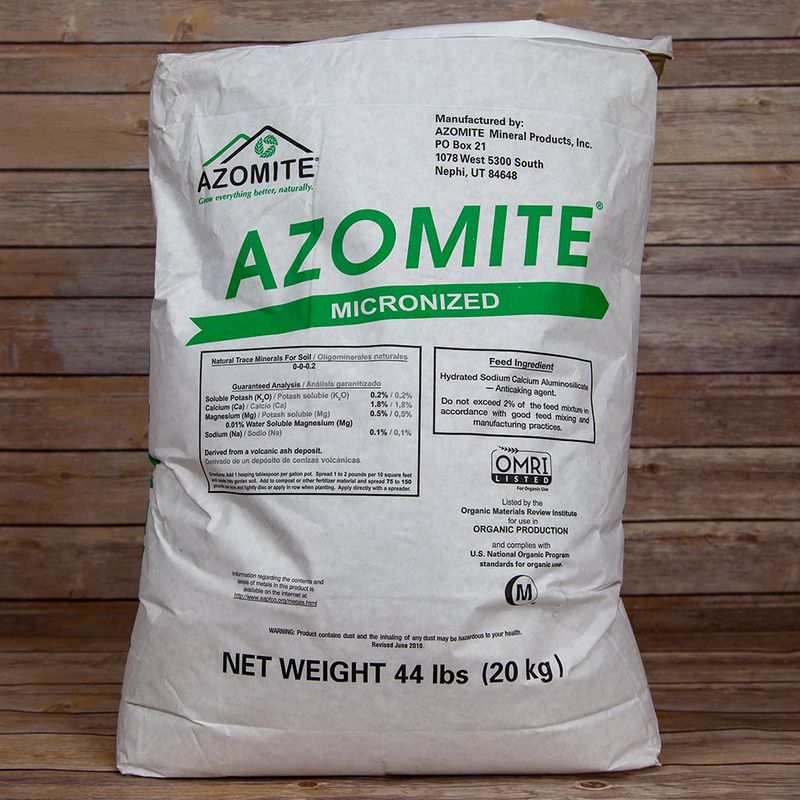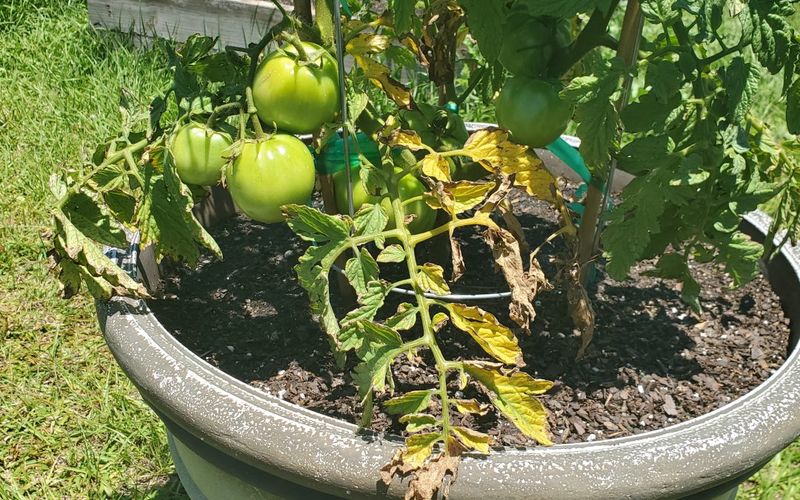July’s heat really kicks your tomato plants into high gear, and they need the right nutrients to keep up. This is when your tomatoes are busy growing fruit, so giving them the proper fertilizer can make all the difference.
With a few simple, expert tips, you can help your plants stay strong and produce juicy, flavorful tomatoes all summer long. I’ve found that understanding exactly what your tomatoes need during these hot weeks is key to avoiding common problems like blossom drop or weak fruit. A little extra care with fertilizing now pays off with a better harvest.
These techniques will make sure your tomato plants don’t just survive the heat—they thrive. If you want those rich, ripe tomatoes to keep coming for weeks, feeding them right in July is essential. It’s the secret to turning your garden into a tomato paradise, even when the sun is blazing overhead.
1. Ease Up On Nitrogen
During July, your tomato plants need less nitrogen and more phosphorus and potassium. Too much nitrogen now encourages leafy growth at the expense of fruit production.
I learned this lesson the hard way last summer when my plants looked gorgeous but produced few tomatoes. Switching to a fertilizer with an NPK ratio like 5-10-10 makes a noticeable difference in fruit set.
Apply this lower-nitrogen fertilizer every two weeks, watering thoroughly afterward to help nutrients reach the roots without burning them in the summer heat.
2. Epsom Salt Solution
Adding one tablespoon of Epsom salt to a gallon of water creates a magnesium boost that helps prevent yellowing leaves and improves fruit development. This simple solution works wonders in the intense July heat when plants are working overtime.
Spray directly on foliage early in the morning before temperatures rise. The leaves absorb the magnesium directly, giving plants an immediate benefit during their heavy fruiting period.
My container tomatoes struggled until I started this treatment every ten days – now they produce twice as many fruits with much better flavor.
3. Banana Peel Tea
Soaking banana peels in water for three days creates a potassium-rich liquid that tomatoes crave during fruiting. The potassium strengthens cell walls, improving fruit quality and disease resistance when July heat stress hits.
Simply chop three banana peels, add to a gallon of water, and let steep. Dilute the resulting tea at a 1:5 ratio before applying directly to the soil around your plants.
After using this twice in July last year, my cherry tomatoes developed noticeably sweeter flavor and firmer skins that resisted cracking during afternoon thunderstorms.
4. Calcium Boost For Blossom End Rot
July’s heat can trigger blossom end rot, those dreaded dark spots on tomato bottoms. Crushed eggshells or garden lime worked into the soil provides the calcium needed to prevent this common problem.
For an immediate fix, mix one tablespoon of calcium chloride in a gallon of water and apply directly to the soil, not the leaves. This quick-release calcium helps developing fruits form properly even during heat stress.
The first time I spotted blossom end rot developing last July, this treatment stopped it from affecting new fruits within a week.
5. Compost Tea Revival
Brewing compost tea by steeping finished compost in water creates a living fertilizer full of beneficial microbes that thrive in July’s warmth. These microorganisms help break down nutrients into forms tomato plants can easily absorb.
Fill a cloth bag with compost, suspend it in a bucket of water for 24-48 hours, stirring occasionally. The resulting brown liquid should smell earthy, not foul.
My struggling tomatoes perked up remarkably after just one application last July – I noticed new growth within days, even on plants that seemed to be stalling in the heat.
6. Seaweed Extract Foliar Spray
Liquid seaweed extract contains trace minerals and natural growth hormones that help tomatoes withstand July’s heat stress. Unlike heavier fertilizers, it won’t push excessive growth that plants can’t support during hot weather.
Mix according to package directions and spray on leaves early morning when temperatures are cooler. The plants absorb these nutrients directly through their foliage, providing quick support during the challenging mid-summer period.
Starting this treatment in early July saved my heirlooms last year when temperatures hit the high 90s for two straight weeks.
7. Coffee Grounds Mulch
Used coffee grounds create a protective mulch that slowly releases nitrogen while improving soil texture around tomato plants. The dark color absorbs heat during July days and releases it slowly overnight, moderating soil temperature fluctuations.
Sprinkle a thin layer (about ¼ inch) around plants, keeping grounds from directly touching stems. Coffee grounds also deter slugs and snails that become more active during humid July evenings.
My neighbor thought I was crazy collecting grounds from the local café until she saw how much better my tomatoes produced during last July’s heatwave.
8. Diluted Worm Casting Tea
Worm castings steeped in water create a gentle, balanced fertilizer perfect for July’s high-production phase. The resulting liquid contains nutrients in forms plants can immediately use, plus beneficial microbes that support root health.
Mix one cup of castings in five gallons of water, let sit overnight, then strain. Apply this tea directly to the soil around plants once weekly during the hottest part of summer.
Even my most finicky heirloom varieties responded beautifully to this treatment when other fertilizers seemed to stress them in the July heat.
9. Phosphorus Focus For Fruiting
Bone meal or rock phosphate provides the phosphorus boost tomatoes need for maximum fruit production during July. This nutrient is critical for energy transfer within the plant, supporting the heavy energy demands of ripening fruit.
Work a handful of bone meal into the soil around each plant, being careful not to disturb the roots. Water thoroughly afterward to help the phosphorus begin breaking down into usable forms.
After adding bone meal to my garden beds mid-July, I noticed tomatoes ripening more evenly and with deeper color than in previous years.
10. Molasses Magic
One tablespoon of unsulfured molasses mixed into a gallon of water feeds beneficial soil microbes that help tomato plants access nutrients. These microorganisms multiply rapidly in July’s warm soil, creating a living support system for your plants.
Apply this sweet solution directly to the soil around plants every two weeks. The natural sugars provide quick energy for soil life without pushing excessive plant growth during the stressful summer heat.
The difference in my garden’s soil texture became noticeable after just three applications – it stayed more friable even during dry spells.
11. Fish Emulsion Evening Feed
Fish emulsion provides gentle, balanced nutrition that’s quickly available to tomato plants without pushing excessive growth during July’s heat. The amino acids and micronutrients support plant health during peak production season.
Apply diluted fish emulsion in the evening when temperatures cool to prevent the solution from fermenting in the heat and creating odors. Water plants first to prevent any risk of root burn.
Despite its initial smell, fish emulsion gave my tomatoes noticeable vigor during last July’s drought – well worth holding my nose for a few minutes!
12. Potassium Boost With Wood Ash
A light dusting of wood ash from untreated hardwoods provides potassium that helps tomatoes develop better flavor and disease resistance during July’s peak growing season. The natural potash also helps plants regulate water usage during hot weather.
Sprinkle just one tablespoon per plant around the drip line, then water in thoroughly. Too much can alter soil pH, so use sparingly – this isn’t a case where more is better.
My grandfather swore by this method, and I’ve found his advice holds true – tomatoes seem to handle drought stress better after this simple treatment.
13. Alfalfa Meal Side Dressing
Alfalfa meal contains triacontanol, a natural growth stimulant that helps tomatoes maintain vigor during July’s challenging conditions. This slow-release organic fertilizer provides balanced nutrition without the risk of burn in summer heat.
Sprinkle a quarter cup around each plant, keeping it a few inches from the stem, then scratch lightly into the soil surface. Water thoroughly to begin the breakdown process.
I’ve found this especially helpful for indeterminate varieties that need sustained nutrition throughout the long growing season – they seem to maintain better leaf health through August.
14. Milk Spray For Calcium
Diluted milk spray provides readily available calcium that helps prevent blossom end rot during July’s fruit development phase. The milk proteins also seem to help plants resist certain fungal issues that become more prevalent in summer humidity.
Mix one part milk with four parts water and spray directly on plants early in the morning so leaves can dry quickly. Use this treatment weekly during periods of rapid fruit development.
Raw milk works best, but even regular milk helped save my Roma tomatoes last July when they started showing calcium deficiency symptoms.
15. Aspirin Water Solution
Dissolving one uncoated aspirin tablet in a gallon of water creates a solution that triggers tomato plants’ natural defense systems. This simple trick helps plants withstand July’s heat stress and resist disease pressure that intensifies during summer.
Apply as a foliar spray every two weeks, covering both the tops and undersides of leaves. The salicylic acid in aspirin essentially vaccinates plants against environmental stresses.
After reading about this in a gardening forum, I tried it during last summer’s heatwave – my treated plants maintained healthier foliage than my neighbor’s untreated ones.
16. Azomite Mineral Boost
Azomite, a natural mineral powder from ancient volcanic ash, contains over 70 trace minerals that help tomatoes develop complex flavors during July’s ripening period. These micronutrients often become depleted in garden soils after years of cultivation.
Sprinkle one tablespoon per plant around the drip line and water in thoroughly. The minerals release slowly, providing balanced nutrition throughout the remainder of the growing season.
The improvement in tomato flavor after adding this to my garden was remarkable – even my basic Roma tomatoes developed noticeably more complex taste.
17. Balanced Feeding Schedule
Creating a rotation of different fertilizers prevents nutrient imbalances during July’s peak growing period. Alternating between nitrogen, phosphorus, and potassium sources ensures tomatoes receive complete nutrition without excesses or deficiencies.
Keep a simple garden journal noting which fertilizer you applied and when. This prevents the common mistake of over-applying one nutrient while neglecting others during the busy summer season.
My most productive tomato season ever came after implementing this rotation system – previously I’d been overdoing nitrogen and wondering why I had beautiful plants with disappointing fruit set.

